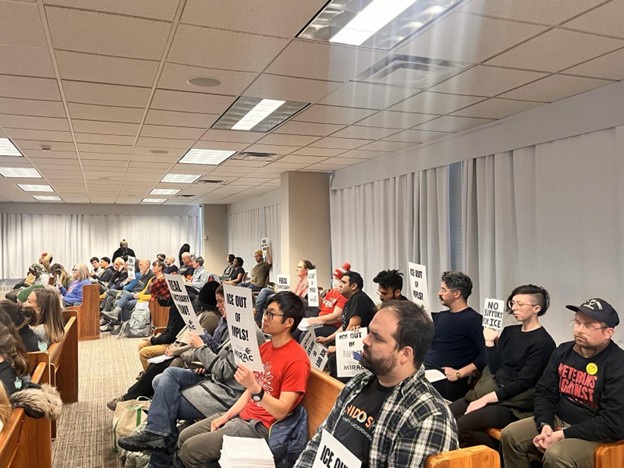Comedian and writer Robin Ince has announced his resignation from the award-winning and long-running BBC Radio 4 science show The Infinite Monkey Cage over the BBC’s restrictions on free speech imposed to protect far-right figures and opinions. Ince had made the popular show with co-presenter Brian Cox since 2009.
In a message “From the desk of Robin Ince”, he explained his sadness at the decision and his reasoning for it:
This is the saddest day of my professional life.
Today is not only the final recording of the latest series of The Infinite Monkey Cage, it is my last ever Monkey Cage.
I never thought that I would have to leave the show. I always imagined going on until I dropped dead under the studio lights due to a brain aneurysm caused by my final attempt to understand notions of quantum gravity or the shock of being told about fly maggot infestations in the sacks of macaque monkeys.
However, I resigned back in September, after sixteen years of dedication to the show; a show I named and helped develop over all those years.
Unfortunately, my opinions outside the BBC have been considered problematic for some time, whether it has been voicing support for the trans community, criticism of Donald Trump and numerous other outlandish opinions including once gently criticising Stephen Fry.
These things were considered to conflict with being a freelance BBC science presenter.
In a recent meeting where BBC Studio executives again voiced problems with me, I realised my choices.
Obedience and being quieter to remain making Monkey Cage, or resign and have the freedom to speak out against what I believe are injustices.
I chose the latter.
It broke my heart.
I love this show and I love the audience, and it is because of the audience in particular, that this decision was so difficult to make.
I kept thinking about all the extremist voices promoting hate and division. They are being given so many platforms, while voices that represent kindness, open mindedness, empathy seem to be scarcer and scarcer. I felt I couldn’t pamper myself with the luxury of silence.
One of my many privileges is that I can resign and I can speak out.
Robin Ince — ‘Though my heart is broken, it is also full of fire.’
He goes on:
I have thought a lot about some of my heroes; Sinead O’Connor, James Baldwin, Audre Lorde, and so many more.
I think of Sinead’s words, “The job of an artist is to be themselves at any cost”.
James Baldwin has said prejudice was really just a word for cowardice.
And Audre Lorde, viewing her life, wrote that her only regrets were her silences.
I think of my father as I resign, he brought me up to believe in fairness, in kindness and in justice.
Though my heart is broken, it is also full of fire.
I apologise to our incredible listeners for my departure, your love of the show means a great deal.
I am so sorry to let you down.
I hope that you can understand my reasoning.
Well done to Ince for making a stand. At the time of writing, his former co-star Cox does not appear to have commented publicly.
Featured image via Twitter
By Skwawkbox

Next: game companies can subscribe to NVIDIA anti-AI-cheating AI. This is innovation under capitalism.